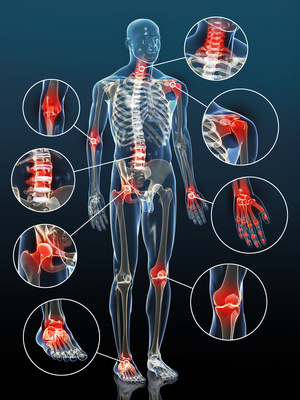Osteoarthritis is a degenerative process of the cartilage covering of the joints that accompanies us all with increasing age. Comparable to the annual rings on trees, it is a reaction to environmental influences and stresses. This reaction varies from person to person and is not initially to be regarded as a disease.
Nevertheless, in many cases arthrosis leads to functional limitations and load-dependent complaints in the locomotor system, which ultimately lead to medical clarification and treatment.
The approaches to therapy vary. A restoration of the original condition “restitutio ad integrum” is usually not possible. Thus, in the best case, the elastic hyaline cartilage is replaced by defect or fibrocartilage. However, there are interesting research approaches that currently allow at least a partial restoration. For example, elastic hyaline cartilage is taken from the nasal septum. Because of their high growth potential, these cartilage cells are cultivated in special nutrient cultures in a complex cleaning and preparation process under very strict hygiene guidelines and can then be implanted back into the affected joint surfaces of the patient after a few months.
This procedure is not a routine procedure, however, but is currently being tested and can currently only cover small defects.
The situation is similar with autologous blood therapy, which is touted as a miracle cure, at least in the media. Here, one must remain clearly grounded in the facts. Autologous blood therapy is also not a common standard in osteoarthritis therapy, as the methods of application and, above all, the results vary greatly.
What is certain, however, is that incorrect and excessive strain is harmful to the joints, especially if an arthritic process is already underway. Factors that promote this are, in particular, obesity, malnutrition and pre-existing diseases or congenital malformations.
Nevertheless, there are simple ways to limit the effects of arthrosis, be it through weight reduction, adapted exercise training, orthopaedic care and medication. Many arthrosis symptoms can be treated conservatively, i.e. without surgery.
For pain-free and optimised movement training to stabilise the surrounding muscle groups, interventional pain therapy procedures in particular make medical sense. With manageable effort, costs and low side effects, a significant improvement in movement function can be achieved here. In the majority of cases, such treatments are sufficient to achieve a good pain-free quality of life and to enable the activities of daily living. In case of renewed pain attacks, these procedures can be repeated at any time.



